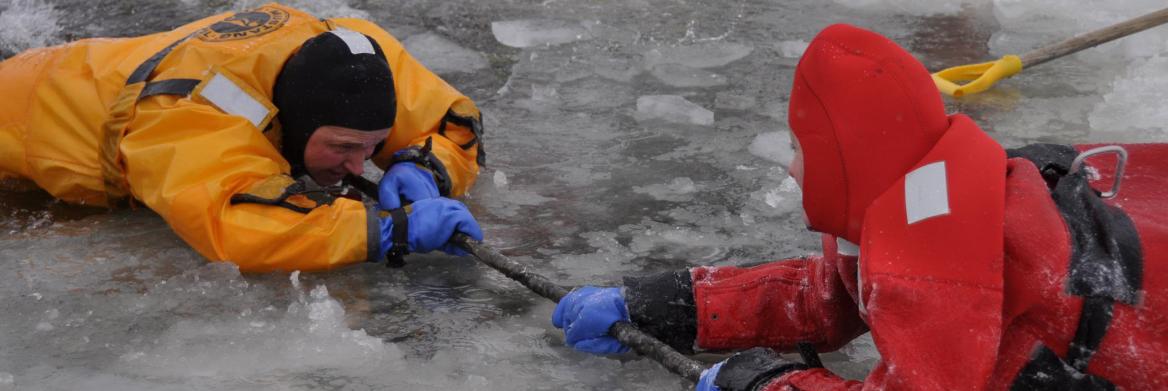Standing on the edge of the ice, Cst. Justin Neufeld — dressed in full uniform — takes a deep breath and plunges into the ice-cold water of Paint Lake, Man.
"The first thing to go are your fine motor skills, you can't grab, you can't hang on, you have no power," says Neufeld, a member from The Pas Detachment. "Panic is such an immediate reaction, but it can be controlled. You don't want to be thrashing and splashing, you need meaningful movements to get out."
Neufeld took the polar plunge as part of specialized ice-rescue training offered to select officers in northern Manitoba, which is spattered with thousands of lakes and rivers. These turn into a mosaic of ice during the colder months.
That's why Sgt. Ben Sewell, a former lifeguard, raft guide and water-safety instructor, began promoting the ice-rescue training program for RCMP officers in 2012. The two-day course, offered by rescue experts, teaches the science and art of ice rescue.
"I think training like this is vital for officers not only in the North, but everywhere in Canada because we have so much water everywhere," says Sewell, with the Manitoba RCMP's Major Crime Services North. "You'd be naive to think that in the winter months, you wouldn't come across one ice-rescue emergency in your career."
After passing the two-day course, participants become certified ice-rescue technicians. Each officer receives a set of ropes and carabineers to use in an emergency ice rescue. As a result of the program, there are now more than 45 technicians across northern Manitoba.
"The training teaches you to be aware of your surroundings and above all else, respect the elements," says Cst. Clark Plaetinck, who participated in the training in 2014. Although he has yet to perform an in-water rescue, he says the training has come in handy for several calls.
"When it's simple enough to talk someone off the ice, or use a boat or a rope, you're going to use the option that makes the most sense to get the person out," he says. "It's a rare occurrence, but when it does happen, you have to be prepared."
Reprinted with permission from the Pony Express ().
